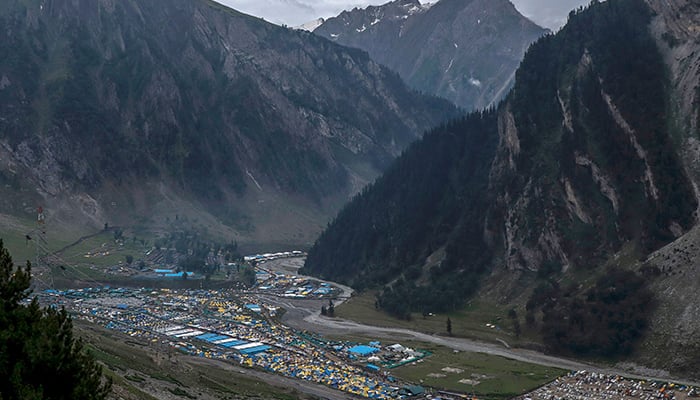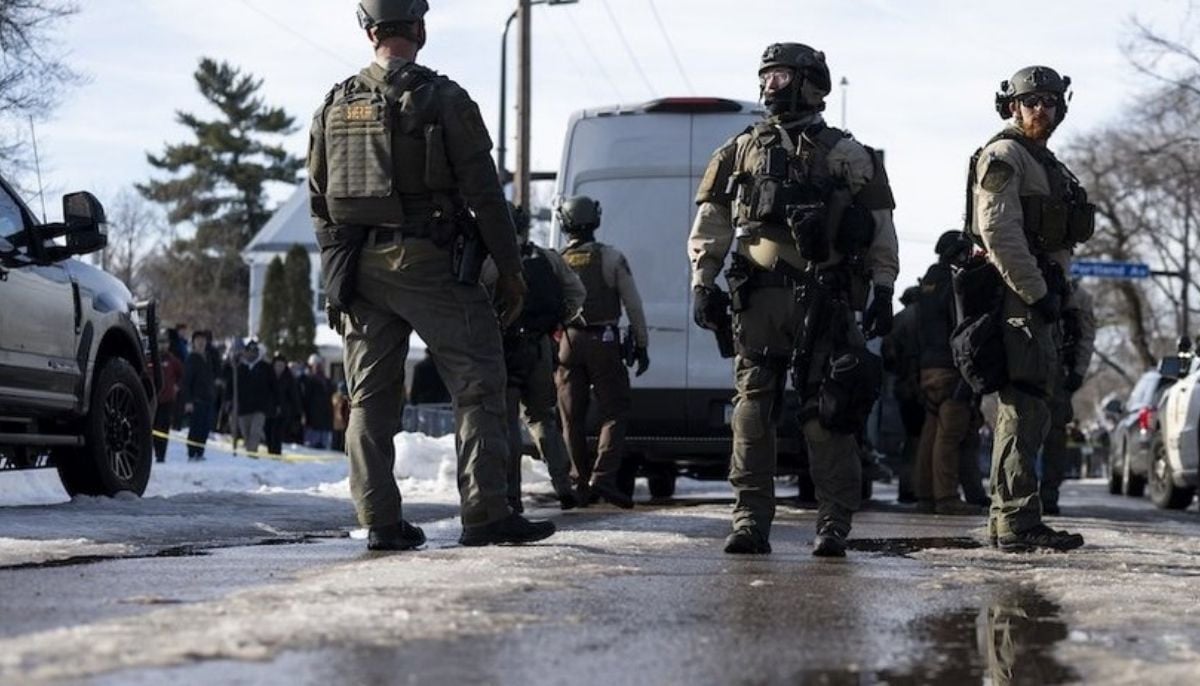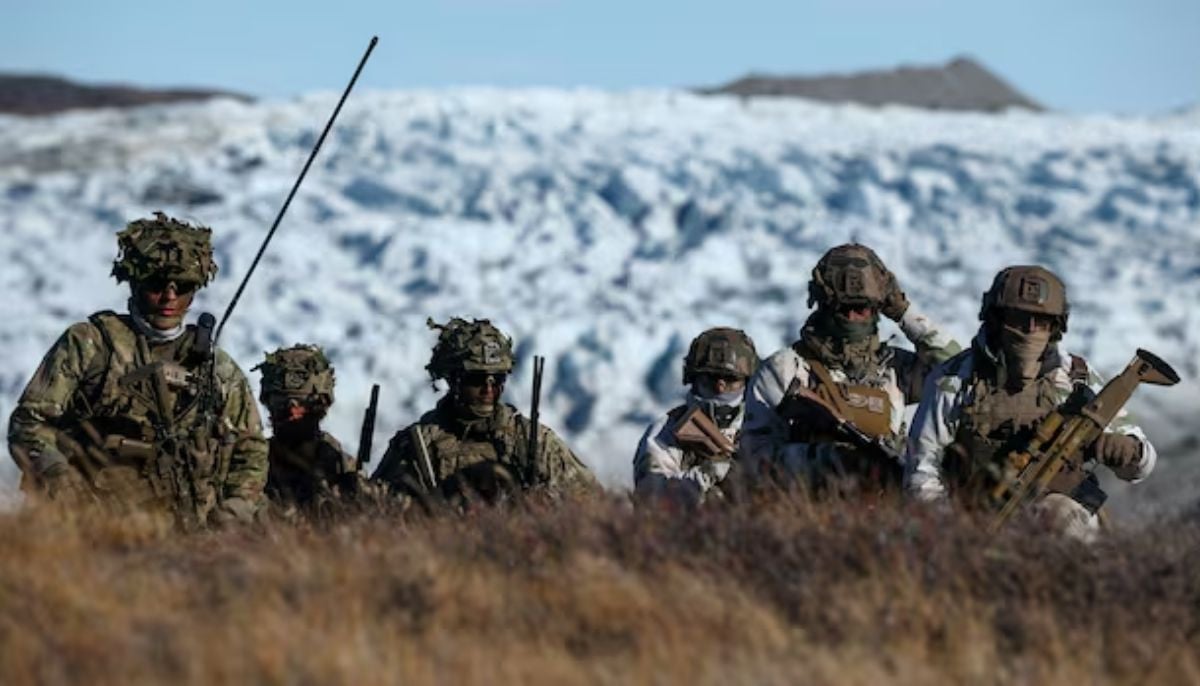Pilgrimage in occupied Kashmir resumes as many missing from floods
Thousands of Hindu pilgrims resumed their trek to a popular cave shrine in the mountains of Indian-occupied Kashmir
SRINAGAR: Thousands of Hindu pilgrims resumed their trek to a popular cave shrine in the mountains of Indian-occupied Kashmir on Monday, even as scores remained missing after flash floods hit one of their camps.
The Amarnath shrine sits at 3,900 metres (12,800 feet) altitude and is dedicated to Shiva, the Hindu god of destruction, with an ice formation in the cave believed to be an incarnation of the deity.
On Friday a sudden cloudburst triggered flash floods that swept away hundreds of tents and three large community kitchens that serve the pilgrims free food, leaving behind a metres-thick layer of mud and debris.
Authorities in the restive territory have confirmed 16 deaths and said on Saturday that another 47 people were missing, but they have subsequently remained tight-lipped on the numbers, and there are concerns the true toll could prove much higher.
"There are layers of thick mud and huge boulders all around the cave brought down by the flood," one individual involved in providing logistics for the pilgrimage every year told AFP after visiting the area.
"I have never seen such devastation up there," they added, declining to be identified as they were not authorised to speak to the media.
"I really fear many, many more could be buried under the debris. Given the rush of people who were hit by the flood, I don’t know how it is possible to estimate the numbers of the missing."
Thousands of soldiers and rescue workers were continuing search efforts on Monday using ground-penetrating radar, thermal imagers and canine squads. The Indian Army said in a statement that specialised mountain and avalanche rescue teams were "continuously working to find any possible signs of life" around the cave.
At the same time, thousands of undeterred Hindu pilgrims reached the traditional Nunwan base camp south of the shrine.
Hundreds of thousands of Hindu devotees undertake the arduous journey for the annual pilgrimage, which was not held for two years because of the coronavirus pandemic.
In 2017, a pilgrim bus was attacked by suspected rebels, leaving 11 dead.
But the weather has proved to be a more regular challenge along the treacherous routes to the cave shrine.
Nearly 250 pilgrims died in 1996 when they were suddenly caught up in snow storms that hit the area.
-
Girl dies after years of alleged starvation by mother in West Virginia
-
‘Operation Arctic Endurance’: Which NATO nations are sending troops to Greenland?
-
Trump administration imposes 25% tariff on imports of some AI chips
-
Microsoft secures largest ever soil carbon credit agreement amid data centres expansion
-
Japan, Philippines sign defence pacts as regional tensions escalate
-
Germany sends troops to Greenland amid rising Arctic tensions
-
Iran flight radar update: airspace closure extended amid heightened tensions
-
Toronto snow day: what to expect after Environment Canada's snow storm warning












